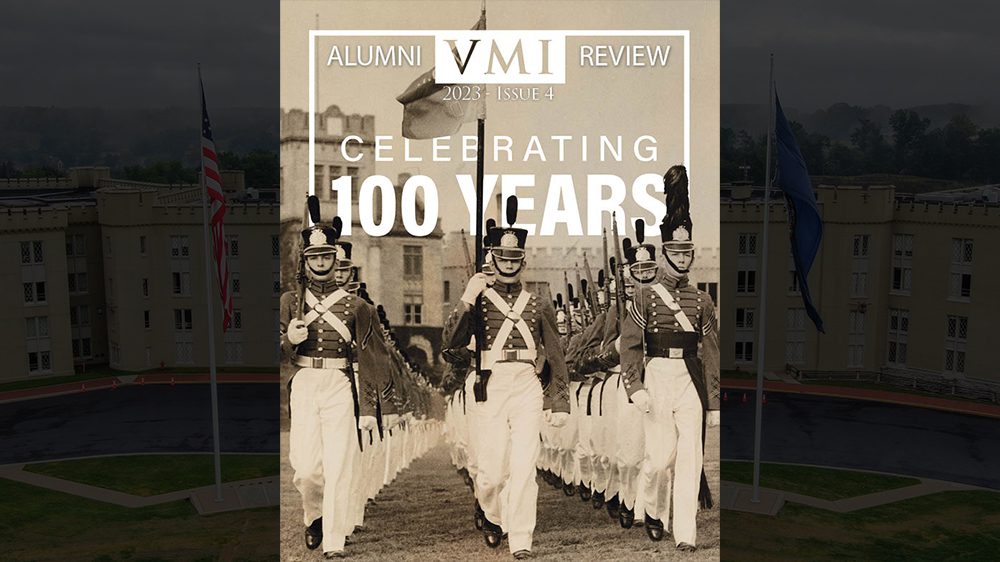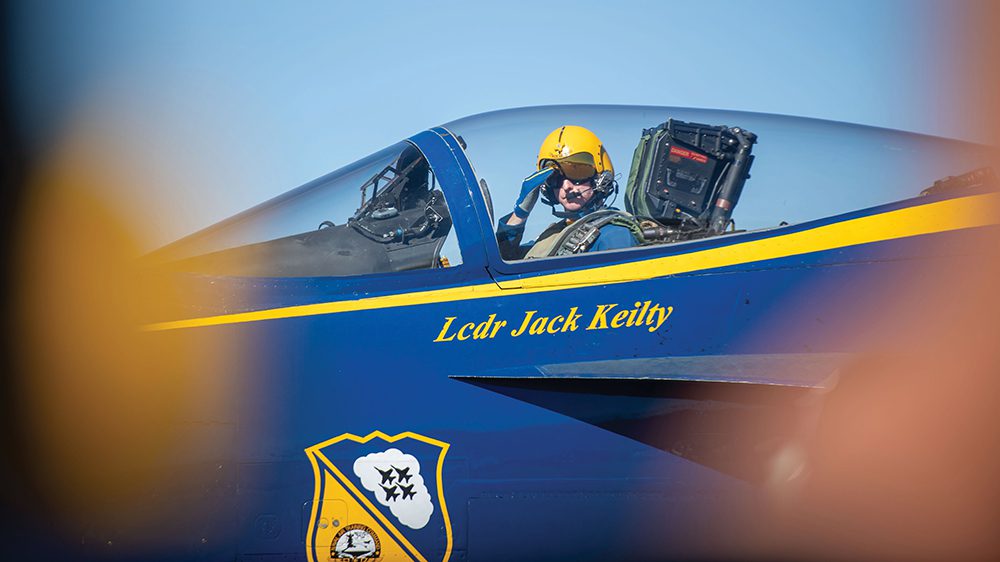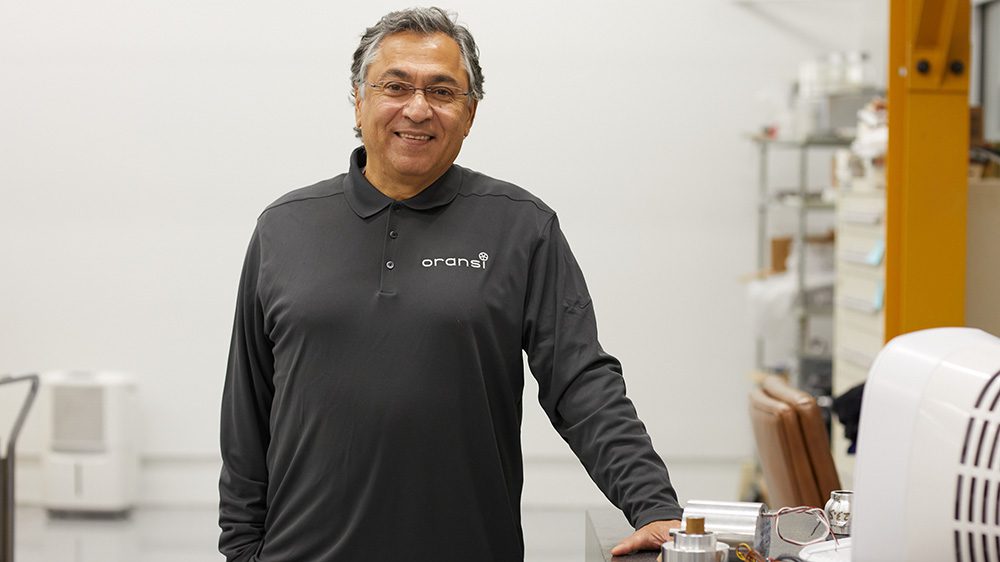Join us as we turn back the pages and review a century of dedication and coverage.
Readers of today’s Alumni Review, accustomed to a glossy, full-color magazine of close to 200 pages appearing in mailboxes like clockwork each quarter, might be quite surprised to learn of the publication’s humble beginnings Nov. 15, 1923. In this centennial issue, we revisit the rich history of the Institute and the VMI family as told in the pages of the Review.
The first issue of what was then called the VMI Alumni News contained a mere six pages of class notes, covering the Classes of 1890–1923, and the entire issue comprised only eight pages.
By 1938, the Alumni News had become the Alumni Review. Over the years—and in response to alumni input—the magazine has been finetuned and reworked to best capture the lives, service, gatherings, and news of alumni, in addition to the cadet experience as it is presently lived out at the Institute. In the mid-20th century, the Review included not only Alumni News and Class Notes but also some of the regular sections familiar to readers today: Baby Keydets (then simply called Births), Marriages, and Taps. For many decades, the Review was supported by advertising from both local businesses and blue-chip corporations; full-color ads from companies such as General Electric and the Bell System ran regularly throughout much of the 20th century, along with rate sheets listing ad sizes and pricing. Most recently, the magazine’s current format, with standardized sections such as Our Alumni Serving, Events, and Progress, was established in 2018.
As times change and the lives of alumni and cadets evolve over the years, so does the Review. Over the next several pages, travel with us as we revisit the last 100 years of VMI alumni and cadet life.
The root of Corps life has remained largely unchanged since the founding of VMI in 1839—the bond cadets build as brother rats beginning on Matriculation Day is unlike any other. And because of this special bond, VMI cadets and alumni have played an integral part in national and global historic moments over the past 100 years.
The continuity of the VMI cadet experience recorded within the issues of the Alumni Review is uncanny. This enduring experience runs as a throughline over the past century, attesting to the power of VMI’s traditions and transformative character expectations as cadets have navigated a perpetually challenging and changing world.
Noted on these pages are celebrated triumphs for the Corps as momentous as welcoming the first Black cadets in 1968 and the first female cadets in 1997, to those as practical as the addition of belt loops to their uniforms. Through the years, cadets have also always had an innate proclivity for finding ways to have fun—even within the rigorous and rigid perimeters of the Institute—including chair sledding on mess hall hill.
A challenging academic curriculum meant to prepare cadets for the promise and possibility of their futures as citizen-soldiers has always been central to VMI’s mission. The past century, of course, has seen numerous changes as to how this mission is fulfilled: Saturday classes have been eliminated, and slide rules, once a vital tool for those studying mathematics and the engineering disciplines, have given way to laptops and smartphones. Equipment in the Institute’s science labs now rivals that at many major research universities, and information-seeking in all areas of study is robustly supported at Preston Library, which is now an in-demand information hub with a rich array of both print and digital materials and highly trained staff available to guide cadet research. Endowed chairs in nearly every academic department support a dedicated faculty, and undergraduate research is flourishing, with ample opportunities for cadets to share their findings with both the Institute community and their peers at other institutions.
With such a breadth and depth of resources, cadets enter the Institute as budding scholars in their fields and leave as confident, well-prepared young men and women able to compete for and win admission to the nation’s most selective fellowships and graduate programs.
Since the late 1860s, athletics has been an integral part of the VMI experience. Though the uniforms may have changed over the last century, the spirit behind the red jerseys has remained. Training and competition at all levels of sports reinforce the leadership lessons cadets learn in barracks and promote the classical idea of “a sound mind in a sound body.” From football championships to a world-ranked track team, it is difficult to highlight any one VMI sport when so many deserve attention. Over the past 100 years, cadet-athletes have celebrated numerous victories, exceptional players, and more; they also have experienced the satisfaction of knowing that, at the end of the day, they have given their all for their team and the Institute.
Through all these achievements, VMI athletics has served to unite the entire VMI family—alumni, parents, cadets, and friends—closer together as they cheer on their Keydets who showcase the Institute and its Corps to the country.
As declared in VMI’s very name, military training has been an integral part of the Institute since its founding in 1839. Over the last century, the unique challenges and modifications to military training on post accompanying each conflict and peacetimes have been documented in the pages of the Review. As warfare and the world changed, so did VMI, with the eventual dissolving of the cavalry regiments, for example. During World War II, VMI updated its combat training, and meanwhile, many cadets shipped off to serve in the middle of their four-year degrees. When they returned to post, the Institute had to find new ways to assimilate these young men who had fought for their country and now returned as veterans, some even married, to finish their education. The Corps—despite having its class years broken up by war into classes of A, B, and C—found new solutions to remain as one. Between 2003–12, the Alumni Review featured alumni serving in Operations Iraqi Freedom and Enduring Freedom to honor the many alumni serving during those conflicts. In late 2012, this section changed to what we now know as Our Alumni Serving, honoring alumni whose service models the citizen-soldier concept within the military and civilian world. Also, in the 21st century, VMI commissioned its first cadets into the U.S. Space Force and, in 2023, saw the first cadets commissioned into the U.S. Coast Guard.
Post has vastly grown and changed over the past 100 years. The scope of post today, extending not only along North Main Street but also north to Lackey Park and east to McKethan Park, would astound a cadet or alumnus from the 1920s and before. The soaring rafters of the Corps Physical Training Facility and the jaw-dropping breadth and depth of the swimming pool in the recently completed Aquatic Center would almost certainly leave the Alumni Review audience of the 1920s agape in awe.
Over time, that physical environment on post has changed to adapt to a growing Corps of Cadets, the need for more modern facilities, and the changing nature of all elements of a VMI education. Vision 2039, implemented beginning in 2003 by Gen. J.H. Binford Peay III ’62, superintendent emeritus, included infrastructure changes to better support its goals and objectives, including the creation of Third Barracks, new athletics facilities, and more.
Although buildings across post have continually expanded and modernized since 1839, the Institute’s style has been consistent. Many buildings have even been featured on the cover of the VMI Alumni Review. One of the many things that make VMI extraordinary is its distinctive architecture—the Gothic Revival style—which sets it apart from its immediate neighbor, Washington and Lee University, and many other colleges in the country.
Over the years, the Institute has rolled out the figurative red carpet for an array of dignitaries—among them a number of U.S. presidents, the first being Millard Fillmore in 1851 and the most recent being George W. Bush in 2002—and well-known alumni. Along the way, vice presidents; senators; and representatives, including John Lewis, civil rights activist and Presidential Medal of Freedom recipient, have visited the Corps. VMI has also hosted an impressive number of foreign leaders, including Britain’s Margaret Thatcher and Germany’s Helmut Schmidt.
U.S. Army Gen. George C. Marshall, Class of 1901, perhaps VMI’s most well-known alumnus, was also a frequent visitor throughout the middle decades of the 20th century, and his longstanding contributions were recognized with the naming of Marshall Arch in 1951. John Glenn, the first American to orbit the Earth, spoke at commencement exercises for the Class of 1965, and Elizabeth Taylor, actress, accompanied her soon-to-be husband, John Warner, on a visit to post in 1976.
The first academic departments established on post, the premier of “Brother Rat,” the evolution of Moe, the Institute Brass’ St. Patrick’s Day performance in Ireland, and the appearance of cadets on MTV make up just a few of VMI’s memorable moments captured in the Alumni Review over the last 100 years. The Review recorded the objectives of the Alumni Association in the Fall 1938 issue, as well as the Association’s first virtual reunion nearly 100 years later during the COVID-19 pandemic. In these photographs and excerpts, we revisit the peculiar, the exceptional, and the miscellaneous moments of VMI from years past.
Over 100 years of coverage, the Alumni Review has continued to be at the pulse of VMI, archiving the minute and seismic histories at the Institute and in the lives of its alumni.
In the last century, VMI has witnessed many firsts. Through the likes of war, technological advances, civil rights victories, a pandemic, and much more, history’s darkest and brightest moments within our world and the nation left their own mark on the Institute—some for a short time and some forever.
The Corps welcomed the first Black cadets in 1968 and the first female cadets in 1997. VMI cadets and alumni experienced the pain of loss and fear of an uncertain world through World War II, the Cold War era, and, most recently, the Global War on Terror and the COVID-19 pandemic.
With the dawning of the Digital Age, VMI saw the revolution of the first computer and the first computer lab installed on post. Cadets saw the end of Saturday classes and the introduction of Third Barracks, among many other infrastructure developments and enhancements on post. Most recently, VMI found a way to remain as one through a global pandemic that dramatically shifted the human and cadet experience, and cadets and alumni alike persevered and stayed connected.
What might be most exceptional, however, is that for as many changes as VMI has experienced over the last 100 years, the traditions of cadet life and the model of the VMI alum—the citizen-soldier—are largely unchanged. Despite the shifts in civilization as we know it, life on post a century later remains a familiar landscape in a world that is ever and often dramatically changing.





